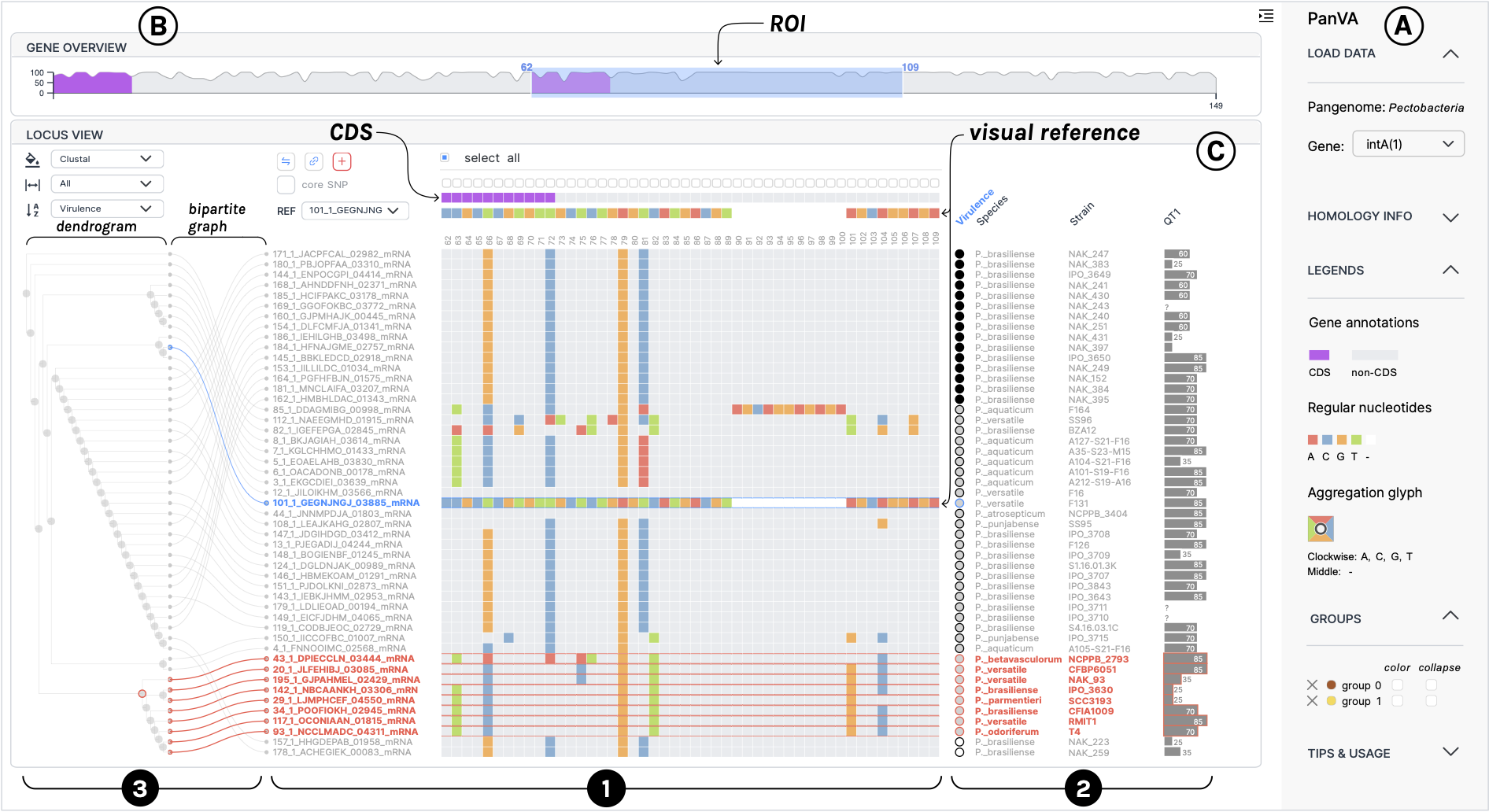PanVA: Pangenomic Variant Analysis
Astrid van den Brandt, Eef M. Jonkheer, Dirk-Jan M. van Workum, Huub van de Wetering, Sandra Smit, Anna Vilanova
DOI: 10.1109/TVCG.2023.3282364
Room: 105
2023-10-26T05:33:00ZGMT-0600Change your timezone on the schedule page
2023-10-26T05:33:00Z

Fast forward
Full Video
Keywords
Visual analytics;design study;pangenomics;comparative genomics;variant analysis
Abstract
Genomics researchers increasingly use multiple reference genomes to comprehensively explore genetic variants underlying differences in detectable characteristics between organisms. Pangenomes allow for an efficient data representation of multiple related genomes and their associated metadata. However, current visual analysis approaches for exploring these complex genotype-phenotype relationships are often based on single reference approaches or lack adequate support for interpreting the variants in the genomic context with heterogeneous (meta)data. This design study introduces PanVA, a visual analytics design for pangenomic variant analysis developed with the active participation of genomics researchers. The design uniquely combines tailored visual representations with interactions such as sorting, grouping, and aggregation, allowing users to navigate and explore different perspectives on complex genotype-phenotype relations. Through evaluation in the context of plants and pathogen research, we show that PanVA helps researchers explore variants in genes and generate hypotheses about their role in phenotypic variation.